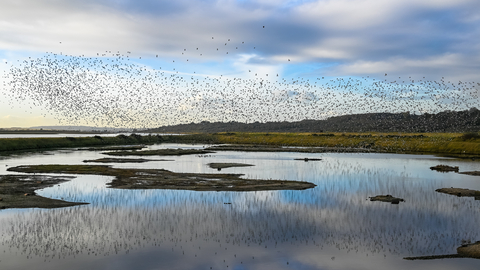We are pleased to announce that Monty's Lookout is now open. You can read more about this fantastic project here. We look forward to welcoming you!

Credit: Mark Taylor - leighonseaphotography.co.uk
Two Tree Island Nature Reserve
Location
Know before you go
Dogs
Please make sure you deposit your dog's waste in one of the bins provided. Between March-September please keep your dogs under control to avoid disturbing ground nesting birds
When to visit
Opening times
Accessible at all timesBest time to visit
All year roundAbout the reserve
The land was reclaimed from the sea in the 18th century when a seawall was built around the saltmarsh and originally used for farming. Now managed as a nature reserve and just a stones through away from Leigh-on-Sea, it is a firm favourite walking destination and a fantastic site for birdwatching.
During winter, look out over the mudflats which provide the perfect habitat for thousands of wildfowl and waders, including noisy flocks of dark-bellied brent geese that feed on the dense beds of eel-grass. Wander round the western section and you will reach the Lagoon Hide, where hundreds of waders such as curlew, dunlin, avocet, redshank and black-tailed godwit flock to in winter. You might also be fortunate enough to see a short-eared owl gracefully hunting throughout the autumn and winter months.
The eastern section is part of Leigh National Nature Reserve, where the saltmarsh is one of the best surviving in the Thames Estuary. Admire the array of saltmarsh plant species such as golden samphire, sea purslane, common sea-lavender and sea aster.
During the summer months the site is brimming with rare insects and butterflies, including the incredibly rare shrill and brown-banded carder bee and wonderful butterflies like marbled white and Essex skipper. Look to the skies and you’ll often see kestrel hovering over the reserve looking for field voles and look to the ground on a warm morning and you might catch a glimpse of a sunbathing adder or slow-worm.
Contact us
Environmental designation
Did you know?
The name of the island originates from two large Elm trees that were a prominent feature until they were brought down by storms in the early 1960s.
